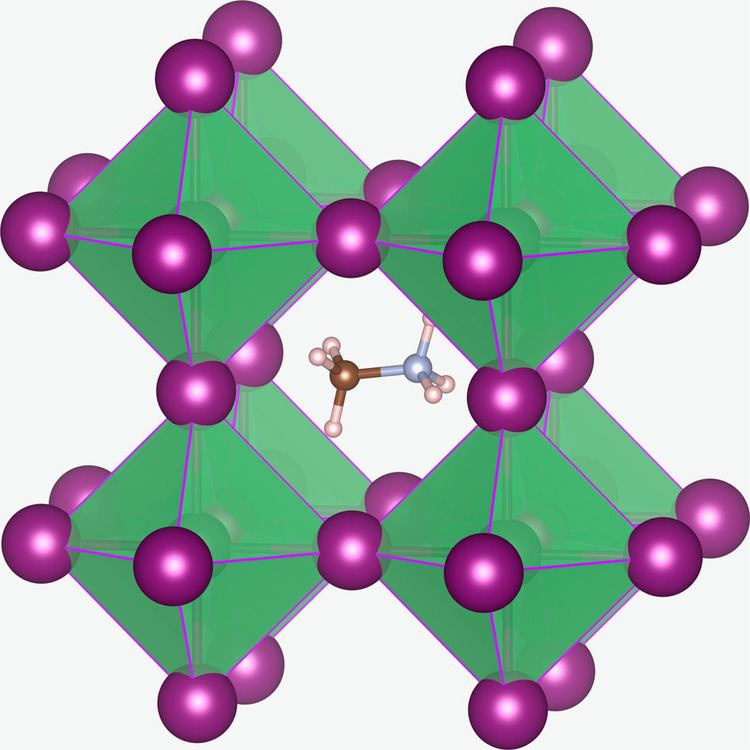 | ||
Methylammonium lead halides (MALHs) are solid compounds with perovskite structure and a chemical formula of CH3NH3PbX3 (MAPbX3), where X = I, Br or Cl. They have potential applications in solar cells, lasers, light-emitting diodes, photodetectors, radiation detectors magneto-optical data storage and hydrogen production.
Contents
Properties and synthesis
In the CH3NH3PbX3 crystal structure the methylammonium cation (CH3NH3+) is surrounded by PbX6 octahedra. The X ions are not fixed and can migrate through the crystal with an activation energy of 0.6 eV; the migration is vacancy assisted. The methylammonium cations can rotate within their cages. At room temperature the ions have the CN axis aligned towards the face directions of the unit cells and the molecules randomly change to another of the six face directions on a 3 ps time scale.
The solubility of MALHs strongly decreases with temperature: from 0.8 g/mL at 20 °C to 0.3 g/mL at 80 °C for CH3NH3PbI3 in dimethylformamide. This property is used in the growth of MALH single crystals and films from solution, using a mixture of CH3NH3X and PbX2 powders as the precursor. The growth rates are 3–20 mm3/hour for CH3NH3PbI3 and reach 38 mm3/hour for CH3NH3PbBr3 crystals.
The resulting crystals are metastable and dissolve in the growth solution when cooled to room temperature. They have bandgaps of 2.18 eV for CH3NH3PbBr3 and 1.51 eV for CH3NH3PbI3, while their respective carrier mobilities are 24 and 67 V/(cm2·s). Their thermal conductivity is exceptionally low, ~0.5 W/(K·m) at room temperature for CH3NH3PbI3.
Thermal decomposition of CH3NH3PbI3
Initially, a proposed decomposition pathway mechanism for CH3NH3PbI3 in presence of water was broadly adopted by researchers in perovskite solar cell. In contrast to the common wisdom that CH3NH3PbI3 is decomposed into CH3NH2 and HI gases. Experimentally, it was found that the major gases released during thermal degradation are methyl iodide (CH3I) and ammonia (NH3).
Applications
MALHs have potential applications in solar cells, lasers, light-emitting diodes, photodetectors, radiation detectors and hydrogen production. The power conversion efficiency of MALH solar cells exceeds 19%.
